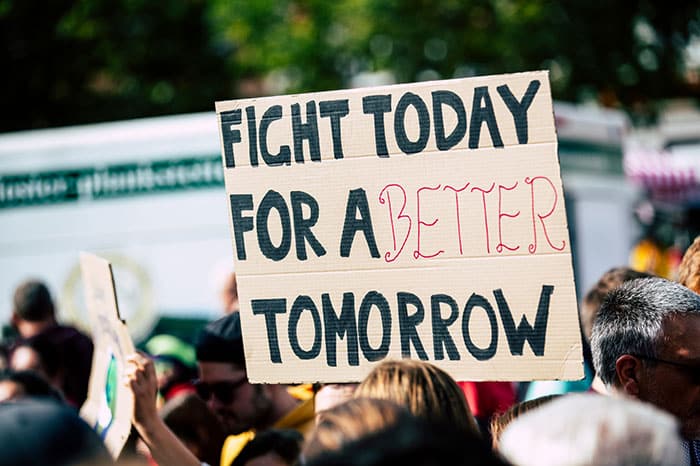How can we build an inclusive climate movement?
Home | Youth Voices |
 How can we build an inclusive climate movement?
How can we build an inclusive climate movement?
As a Black British Muslim woman who is heavily involved in the charity and youth activism sectors, something has become strikingly clear to me over the last couple of years: the lack of BIPOC (Black, indigenous and people of colour) representation or involvement in large parts of the climate movement.
It has become apparent that the ever-growing climate change movement in the global North is often a very white and middle-class movement. But why might this be the case? In trying to dissect this and understand it for myself, I asked and read around what BIPOC individuals and activists had to say about the climate change movement and found various answers to my question in the process.
One reason, that is sometimes hard to swallow, is that the climate movement in the UK is not as inclusive as it should be in its approach. It often fails to address and engage with environmental racism or injustice which can be off-putting for BIPOC. Climate change impacts BAME communities the most, both in the global South and the global North. People at intersections of multiple oppressions are usually impacted to a higher degree, so it is no surprise that BIPOC are disproportionally affected by climate change. Privilege, power, and oppression are all integral to our understanding of how we are impacted by climate change and our environment.
However, despite being the most affected by the climate crisis, BIPOC are still not at the forefront of climate change activism because their needs – our needs – are not addressed in such movements. Even when we speak out, our voices are either intentionally or unintentionally erased from conversations surrounding climate change. Exploring the ways that global warming harms low-income communities, primarily BIPOC communities, here in the UK and elsewhere is critical to understanding how we can overcome this lack of diversity and inclusion in climate-based movements. We therefore must challenge ourselves to centre the voices of those most impacted by environmental harm in the fight for the protection of our planet.
Some of the biggest climate change movements in the UK have already addressed and accepted that their movements need to be more inclusive. While addressing the matter is the first step to a solution, it must be followed by tangible action. If you, or your organisation, are questioning why there is little BIPOC involvement or representation in your environment campaigns and movements, a good place to start might be to ask yourself whether your climate activism or movement is intersectional? If climate or environment centred movements want more BIPOC representation and involvement, then the solution could be straightforward: include and spotlight our experiences too.
Follow Hashas’ Instagram account ‘h.a.s.charitable.trust’ to keep up to date with her activism and the work she’s currently doing around female genital cutting.
If you want to share your voice and views on an issue you feel passionate about through our blog then get in touch at blog@raleighinternational.org.
The views expressed here are those of the author and do not necessarily represent the views of, or an endorsement by, Raleigh International.
 How can we build an inclusive climate movement?
How can we build an inclusive climate movement?



